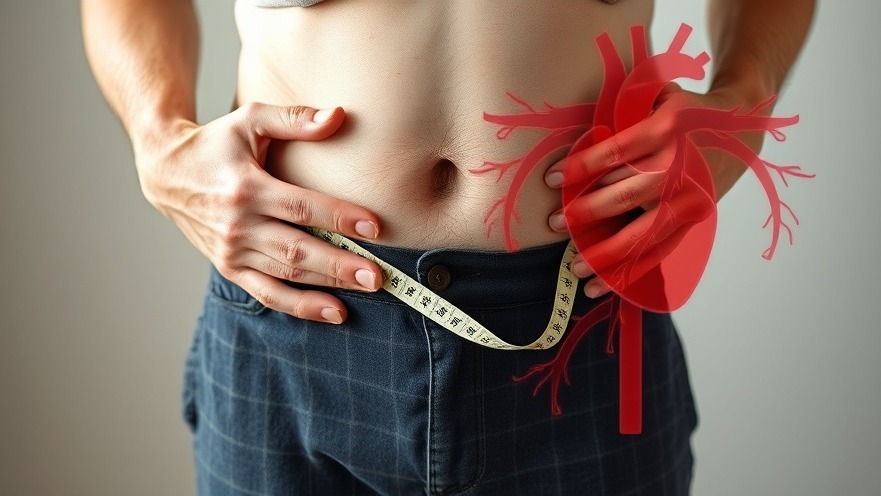
Understanding Visceral Fat and Its Health Risks
In today’s fast-paced world, weight gain has become common, but not all fat is created equal. One type of fat, often hidden from view, can pose a serious threat to your health: visceral fat.
Unlike subcutaneous fat—the fat you can pinch just under your skin—visceral fat wraps itself around vital organs deep in the abdomen, creating risks you might not even see.
In “Flatten Your Belly, Protect Your Heart: Visceral Fat Explained”, the discussion dives into how this hidden fat can endanger your long-term health and what you can do about it.
Why Knowing About Visceral Fat Matters
Visceral fat is far more than a cosmetic issue. High levels are linked to serious diseases, including type 2 diabetes, stroke, and certain cancers.
“Visceral fat is metabolically active, meaning it doesn’t just sit there—it actually releases hormones and inflammatory chemicals that can damage blood vessels and organs.”
— Dr. Jean-Pierre Després, Professor of Medicine at Laval University
That means belly fat isn’t just stored energy—it’s actively working against your health.
By releasing substances called cytokines, visceral fat promotes chronic inflammation, a silent force behind many illnesses.
This explains why even people who appear thin but carry excess fat around their midsection can still face serious health risks.
How to Identify Visceral Fat
Unlike subcutaneous fat, visceral fat is harder to detect because it’s hidden beneath muscle layers. However, waist measurements provide an important clue.
Women: a waistline over 35 inches
Men: a waistline over 40 inches
“Think of waist circumference as a window into your health. A tape measure can sometimes tell you more than a scale.”
— Dr. Michael Jensen, Endocrinologist at the Mayo Clinic
A bathroom scale might tell you your overall weight, but it can’t reveal whether that weight is healthy or harmful. A simple tape measure, on the other hand, can offer a clearer picture of whether dangerous belly fat may be accumulating around your organs.

The Connection Between Belly Fat and Heart Health
For Sacramento residents living in a state that champions healthy, outdoor lifestyles, heart health is a top concern.
Research shows that visceral fat contributes to higher cholesterol, increased blood pressure, and insulin resistance—all factors that strain the cardiovascular system.
“Visceral fat is especially harmful to the heart because it floods the liver with fatty acids, raising bad cholesterol and triglycerides.”
— Dr. Caroline Apovian, Professor of Medicine at Harvard Medical School
When visceral fat breaks down, it releases fatty acids that travel directly to the liver. This process disrupts normal cholesterol balance, increases inflammation, and puts extra pressure on the heart.
Flattening your belly, then, becomes more than a goal for appearance—it’s an act of prevention against heart disease.
Healthy Meals to Combat Visceral Fat
Nutrition plays a starring role in reducing visceral fat. Diets rich in whole, plant-based foods, lean proteins, and healthy fats can help reset the body’s balance.
Sacramento’s farmers’ markets and community-supported agriculture (CSA) boxes make it easy to stock up on:
Leafy greens (spinach, kale, chard)
Fruits (berries, apples, citrus)
Whole grains (brown rice, quinoa, oats)
Healthy fats (avocados, olive oil, nuts)
Cutting down on processed foods, refined sugars, and excess alcohol is equally important. The Mediterranean diet, for example, has been widely studied for its ability to reduce belly fat and improve overall health.
Foods rich in fiber, antioxidants, and heart-healthy fats calm inflammation and stabilize blood sugar—two key factors in keeping visceral fat under control.
Physical Activities That Make a Difference
Exercise is a powerful tool against visceral fat. Sacramento’s parks, trails, and riverside paths are perfect for getting started.
Cardio exercises like brisk walking, cycling, or swimming torch calories.
Strength training helps build muscle, which boosts metabolism even at rest.
Research shows that combining cardio and resistance training produces the most significant reduction in visceral fat. Even 30 minutes of movement most days of the week can make measurable improvements.
It’s not about punishing workouts—it’s about building consistency and making activity a natural part of daily life.

Building a Supportive Community
One of Sacramento’s strengths is its strong sense of community. Group fitness classes, outdoor meetups, or even neighborhood walking clubs can keep you motivated.
“Accountability is one of the most powerful motivators in health. When you surround yourself with people who value wellness, it becomes easier to make lasting changes.”
— Dr. Samantha Heller, Clinical Nutritionist
Whether it’s joining a local yoga class, signing up for a fun run, or cooking healthy meals with friends, support from others can transform personal goals into shared lifestyle habits. Health becomes more enjoyable when you’re not going it alone.
Embracing Holistic Approaches to Health
Beyond diet and exercise, lifestyle habits influence how much visceral fat you carry.
Stress management: Chronic stress raises cortisol, a hormone linked to belly fat storage.
Quality sleep: Poor sleep increases appetite and insulin resistance.
Hydration: Drinking enough water supports metabolism and appetite control.
Mind-body practices like yoga, meditation, or tai chi can help reduce both stress and fat storage. Together, these small daily habits add up to a healthier body and mind, creating a foundation for long-term wellness.
Conclusion: Taking Action for Better Health
Understanding visceral fat is the first step; acting on it is the next. Sacramento’s health-conscious community offers countless opportunities—from farm-fresh foods to scenic walking trails—to make progress.
Flattening your belly is more than a cosmetic goal. It’s about protecting your heart, boosting your energy, and safeguarding your future health.
So grab a tape measure, plan a fresh meal, and invite a friend to join you for a walk along the American River Parkway. Every choice adds up—and every step takes you closer to better health.
Continue your journey toward balance and wellness—discover more articles in Holistic Healing or return to the Sacramento Living Well homepage for more community stories.
---
Authored by the Sacramento Living Well Editorial Team — a publication of DSA Digital Media, dedicated to highlighting wellness, local living, and inspiring community stories throughout Greater Sacramento.
 Add Row
Add Row  Add
Add 





Write A Comment